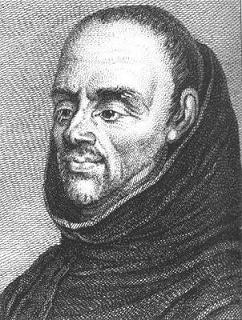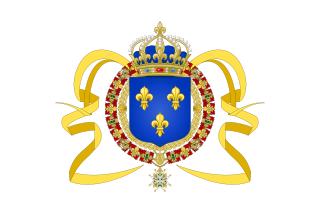 W
WThe Arawak are a group of indigenous peoples of South America and of the Caribbean. Specifically, the term "Arawak" has been applied at various times to the Lokono of South America and the Taíno, who historically lived in the Greater Antilles and northern Lesser Antilles in the Caribbean. All these groups spoke related Arawakan languages.
 W
WThe Blockade of Saint-Domingue was a naval campaign fought during the first months of the Napoleonic Wars in which a series of British Royal Navy squadrons blockaded the French-held ports of Cap Français and Môle-Saint-Nicolas on the borthern coast of the French colony of Saint-Domingue, soon to become Haiti, after the conclusion of the Haitian Revolution on 1 January 1804. In the summer of 1803, when war broke out between the United Kingdom and the French Consulate, Saint-Domingue had been almost completely overrun by Haitian forces commanded by Jean-Jacques Dessalines. In the north of the country, the French forces were isolated in the two large ports of Cap Français and Môle-Saint-Nicolas and a few smaller settlements, all supplied by a French naval force based primarily at Cap Français.
 W
WCampuzano Polanco was a prominent family from the colony of Santo Domingo with origins in Santiago de los Caballeros. During the colonial era of the Hispaniola, their members and descendants went on to occupy high political, military and ecclesiastical positions, locally and outside the Island, as well as in the metropolis of Spain. Their merits extend since the beginning and until the end of the colony.
 W
WThe Ciboney, or Siboney, were a Taíno people of Cuba, Jamaica and Haiti and Dominican Republic. A Western Taíno group living in central Cuba during the 15th and 16th centuries, they had a dialect and culture distinct from the Classic Taíno in the eastern part of the island, though much of the Ciboney territory was under the control of the eastern chiefs. Confusion in the historical sources led 20th-century scholars to apply the name "Ciboney" to the non-Taíno Guanahatabey of western Cuba and various archaic cultures around the Caribbean, but this is deprecated.
 W
WThe Columbian Viceroyalty, Viceroyalty of India or First Viceroyalty in the Indies is the name that designates the number of titles and rights granted to Christopher Columbus by the Catholic Monarchs in 1492 on the lands discovered and undiscovered, before embarking on his first trip that culminated in the discovery of the Americas.
 W
WChristopher Columbus was an Italian explorer and navigator who completed four voyages across the Atlantic Ocean, opening the way for European exploration and colonization of the Americas. His expeditions, sponsored by the Catholic Monarchs of Spain, were the first European contact with the Caribbean, Central America, and South America.
 W
WDiego Columbus was a navigator and explorer under the Kings of Castile and Aragón. He served as the 2nd Admiral of the Indies, 2nd Viceroy of the Indies and 4th Governor of the Indies as a vassal to the Kings of Castile and Aragón. He was the elder son of Christopher Columbus and his wife Filipa Moniz Perestrelo.
 W
WJuan de Esquivel was a Spanish officer involved with the Colon family's government of the West Indies, particularly Jamaica.
 W
WThe First Empire of Haiti, officially known as the Empire of Haiti, was an elective monarchy in North America. Haiti was controlled by France before declaring independence on January 1, 1804. The Governor-General of Haiti, Jean-Jacques Dessalines, created the empire on September 22, 1804. Proclaiming himself Emperor Jacques I, he held his coronation ceremony on October 6. The constitution of May 20, 1805, set out the way the empire was to be governed, with the country split into six military divisions. The general of each division corresponded directly with the emperor or the general in chief appointed by the emperor. The constitution also set out the succession to the throne, with the crown being elective and the reigning emperor having the power to appoint his successor. The constitution also banned white people, with the exception of naturalised Germans and Poles, from owning property inside the empire.
 W
WThe Capture of Fort Rocher took place on 9 February 1654, during the Franco-Spanish War (1635–1659). Equipped with one siege battery, a Spanish expedition of 700 troops attacked the buccaneer stronghold of Tortuga, capturing the Fort de Rocher and 500 prisoners including 330 buccaneers and goods valued at approximately 160,000 pieces-of-eight. The Spanish burned the colony to the ground and slaughtered its inhabitants, leaving behind a fort manned by 150 soldiers. They possessed the island for about eighteen months, but on the approach of the expedition under Penn and Venerables were ordered by the Conde de Peñalva, Governor of Santo Domingo, to demolish the fortifications, bury the artillery and other arms, and retire to his aid in Hispaniola.
 W
WPierre Le Grand was a French buccaneer of the 17th century. He is known to history only from one source, Alexandre Exquemelin's Buccaneers of America, and may be imaginary.
 W
WJuan de Grijalva was a Spanish conquistador, and a relative of Diego Velázquez. He went to Hispaniola in 1508 and to Cuba in 1511. He was one of the early explorers of the Mexican coastline.
 W
WHatuey, also Hatüey, was a Taíno cacique (chief) originally from the island of Hispaniola, who lived in the early sixteenth century and fled to Cuba during the Spanish conquest. He has attained legendary status for leading a group of natives in a fight against the invading Spaniards, and thus becoming one of the first fighters against colonialism in the New World. He is celebrated as "Cuba's First National Hero". The 2010 film Even the Rain includes a cinematic account of Hatuey's execution.
 W
WThe Kingdom of Haiti was the state established by Henry Christophe on 28 March 1811 when he was self-proclaimed as King Henry I after having previously ruled as president of the State of Haiti, in the northern part of the country. This was Haiti's second attempt at monarchical rule, as Jean-Jacques Dessalines had previously ruled over the First Empire of Haiti as Emperor Jacques I from 1804 until his assassination in 1806.
 W
WThe New Laws, also known as the New Laws of the Indies for the Good Treatment and Preservation of the Indians, were issued on November 20, 1542, by Charles V, Holy Roman Emperor and regard the Spanish colonization of the Americas. Following complaints and calls for reform from individuals such as the Dominican friar Bartolomé de Las Casas, these laws were intended to prevent the exploitation and mistreatment of the indigenous peoples of the Americas by the encomenderos, by strictly limiting their power and dominion over groups of natives. The text of the New Laws has been translated into English.
 W
WThe Peace of Ryswick, or Rijswijk, was a series of treaties signed in the Dutch city of Rijswijk between 20 September and 30 October 1697. They ended the 1688 to 1697 Nine Years' War between France, and the Grand Alliance, which included England, Spain, Emperor Leopold, and the Dutch Republic.
 W
WCharles Plumier was a French botanist, after whom the Frangipani genus Plumeria is named. Plumier is considered one of the most important of the botanical explorers of his time. He made three botanizing expeditions to the West Indies, which resulted in a massive work Nova Plantarum Americanarum Genera (1703–04) and was appointed botanist to king Louis XIV of France.
 W
WJuan Ponce de León, commonly known as Ponce de León, was a Spanish explorer and conquistador known for leading the first official European expedition to Florida and serving as the first governor of Puerto Rico. He was born in Santervás de Campos, Valladolid, Spain in 1474. Though little is known about his family, he was of noble birth and served in the Spanish military from a young age. He first came to the Americas as a "gentleman volunteer" with Christopher Columbus's second expedition in 1493.
 W
WThe first Republic of Haiti controlled the southern portions Haiti from 1806 until 1820. The republic, commonly referred to as South Haiti during its existence, was created on October 17, 1806 following the assassination of Emperor Jacques I and the overthrow of the First Empire of Haiti. The southern Republic of Haiti was ruled by General Alexandre Pétion, a free person of color, as President from March 9, 1807 until his death on March 29, 1818. He was succeeded by Jean-Pierre Boyer.
 W
WThe Republic of Haiti from 1820 to 1849 was effectively a continuation of the first Republic of Haiti that had been in control of the south of what is now Haiti since 1806. This period of Haitian history commenced with the fall of the Kingdom of Haiti in the north and the reunification of Haiti in 1820 under Jean-Pierre Boyer. This period also encompassed Haitian occupation of Santo Domingo from 1822 to 1844 creating a unified political entity on the island of Hispaniola. Although termed a republic, this period of was dominated by Boyer's authoritarian rule as president-for-life until 1843. The first Republic of Haiti ended in 1849 when president Faustin Soulouque declared himself emperor, thus beginning the Second Empire of Haiti.
 W
WSaint-Domingue was a French colony on the Caribbean island of Hispaniola from 1659 to 1804, in what is now Haiti.
 W
WSanto Domingo, once known as Santo Domingo de Guzmán, is the capital and largest city of the Dominican Republic and the largest metropolitan area in the Caribbean by population. As of 2010, the city had a total population of 2,908,607, when including the metropolitan area. The city is coterminous with the boundaries of the Distrito Nacional, itself bordered on three sides by Santo Domingo Province.
 W
WThe Second Empire of Haiti, officially known as the Empire of Haiti, was a state which existed from 1849 to 1859. It was established by the then-President, former Lieutenant General and Supreme Commander of the Presidential Guards under President Riché, Faustin Soulouque, who, inspired by Napoleon, declared himself Emperor Faustin I on August 26, 1849 at the Cathedral of Our Lady of the Assumption in Port-au-Prince. Faustin's unsuccessful invasions in an attempt to reconquer the Dominican Republic, which declared independence from Haiti in 1844, undermined his control over the country.
 W
WThe State of Haiti was the name of the state in northern Haiti. It was created on October 17, 1806 following the assassination of Emperor Jacques I and the overthrow of the First Empire of Haiti. The northern State of Haiti was ruled by Henri Christophe originally as Provisional Chief of the Haitian Government from October 17, 1806 until February 17, 1807 when he became President of the State of Haiti. The 1807 constitution for the State of Haiti made the post of president a position for life with the president having the power to appoint his successor. On March 28, 1811 President Henri was proclaimed King Henri I, thereby dissolving the State of Haiti and creating the Kingdom of Haiti.
 W
WThe Taíno ritual seat is a Pre-Columbian wooden seat made in the form of a man on all fours. It was made by the Taino people and found in a cave near the city of Santo Domingo in the Dominican Republic. The seat was made before Christopher Columbus landed in the Caribbean and is an important remnant of the Taino culture and civilisation that existed before the arrival of Europeans.
 W
WTortuga Island is a Caribbean island that forms part of Haiti, off the northwest coast of Hispaniola. It constitutes the commune of Île de la Tortue in the Port-de-Paix arrondissement of the Nord-Ouest department of Haiti.